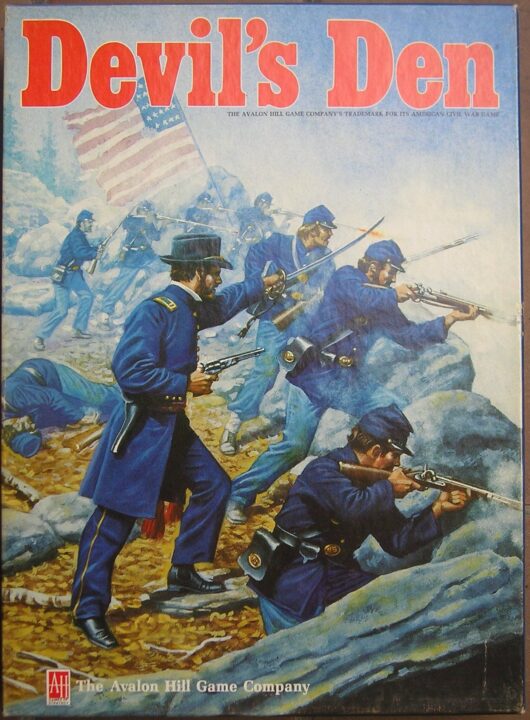So there we were, four grown adults at my kitchen table, arguing if you can trust anyone in this game or if all hope is lost the minute someone draws a certain card. Yep, this is my review of Devil’s Den – the board game that turned my friends into suspicious, plotting maniacs (well, more than usual). If you’re wondering if this game is worth your time, your cash, and possibly your remaining friendships, let me break it all down for you. Spoiler: I had a blast, but there’s stuff you should know before you sign your soul away for a night of cardboard chaos.
How It Plays
Setting up
First, pop open the box and lay out the big spooky board. Each player grabs their own devilish minions, matching color tokens, and a stash of coins. Shuffle the deck of event cards—seriously, some of them are wild—and deal out starting hands. Put the dark throne piece front and center, right where it can mock you all game. Set those victory point chips nearby, ready for someone else to grab them before you.
Gameplay
On your turn, you move your minions around the board, snatching up resources, and hatching sneaky plots. You can bribe, backstab, and bargain with your friends—if you have any left by the end. Events can mess up the best plans, so don’t get too cocky. A lucky card draw might save you, or ruin your dreams—that’s just life (and Devil’s Den)! Turns go by quick since players stay busy even when it’s not their move.
Winning the game
First to a set number of victory points wins the whole thing. You’ll get points for controlling key spots on the board, making clever trades, or pulling off risky moves. At the end, we always argue about who made the sneakiest play. In our group, winning Devil’s Den is bragging rights until next game night, and trust me, you’ll want a rematch.
Want to know more? Read our extensive strategy guide for Devil’s Den.
Game Balance and Fairness in Devil’s Den
Let’s talk about game balance and fairness, two things I care about more than my morning coffee. Devil’s Den claims to be a tactical showdown, and that instantly got my group excited. We love games where skill and wit—especially mine—actually matter! We set up the board, divvied up our demon and angel pieces, and prepared for battle. I had high hopes, and so did my competitive cousin Steve (he still holds a grudge from Monopoly 2017).
Now, in Devil’s Den, the rules promise a fair playing field. The resource system is tight, so you can’t just steamroll enemies with luck. I was happy to see that if you lose, it’s probably your own fault (sorry, Steve). The angels and demons both have unique abilities, but neither side feels overpowered. The game forces you to think hard about how you use your actions. Even when I tried to play extra sneaky (and trust me, I do), my friends foiled my plans because the game allowed them to counter my moves. That’s balance.
But it’s not perfect. The event cards sometimes throw in a wild twist, and I’ll admit it: I groaned when one knocked me off my well-crafted perch. It can feel a bit random at times—like the game wants to humble you just when you’re getting cocky. Still, these moments are rare, and most of the time, skill decides who wins. If game fairness is your jam, Devil’s Den really delivers, but be ready for the odd curveball.
Next, I’ll chat about Luck versus Strategy in Devil’s Den—get ready, because this topic is hotter than a demon’s sauna!
Luck vs Strategy: Can You Outsmart the Devil’s Den?
I learned pretty quick in Devil’s Den that this game isn’t for people who want everything to go according to plan. My friend Chad, who once made a spreadsheet to track Monopoly deals (not kidding!), nearly lost his mind when his perfectly laid plans went up in smoke after one unlucky roll. That’s Devil’s Den for you—luck always sits at the table, probably eating your snacks.
Don’t get me wrong, there’s a good chunk of strategy in Devil’s Den. You can plot alliances, bluff your way out of trouble, and try to read your buddies like an open book. I watched my friend Sam sweet-talk her way out of a major setback, somehow making everyone else think it was in their best interest to help her. If you like games where talking and scheming gets you ahead, Devil’s Den gives you that.
But just when you feel clever, the random stuff sneaks in. Those event tokens? Sometimes they will leave you grinning like you just found five bucks in your pocket, but other times you might as well have tripped over your own shoelaces. I’d say the game sits somewhere in the middle: not full chaos, but not pure mastermind territory either.
If you love games with more brains than luck, Devil’s Den might test your patience. But if you’re okay with a dash of chaos, it keeps things lively! Next up: Will the quirky art and chunky components tempt you to clear space on your shelf? Stay tuned for tales of cardboard greatness—or disaster!
Devil’s Den Component Quality and Artwork: A Spooky Delight
My first thought when I opened Devil’s Den: this box looks like it could swallow my soul. In a good way! The artwork leaps out and screams, “You’re doomed!” (again, in a good way). Every card has detailed illustrations, and the game board looks like something out of a haunted comic book. I showed my friend Marcus the rulebook, and he tried to use it as a poster. I had to take it back before he taped it to his wall.
The component quality surprised me. The pieces feel sturdy, not like those games where the tokens wilt after you sneeze. The standees have a nice thickness, and the dice roll with a satisfying clatter (not too light, not too heavy—just right). The cards feel smooth and don’t stick together, even after Marcus dropped salsa on them. (Pro tip: Keep snacks away from the cards.)
One gripe: the insert in the box could be better. You know those trays where everything actually fits? Yeah, Devil’s Den missed that party by a few hours. Expect some rattling when you carry it around, unless you stuff it with old socks, which, for the record, I do not recommend.
But overall, Devil’s Den makes a strong first impression with its eerie design and hefty pieces. You can tell the creators poured some real ghostly love into the look and feel.
Now, if you’re wondering how it feels to play against your friends and maybe curse at them a little, buckle up for the next section: Player Interaction and Engagement. It gets wild!
How Does Devil’s Den Get People Talking? Player Interaction and Engagement
If you like board games that get everyone squinting at each other across the table, Devil’s Den might be your new favorite. This game throws you (and your unsuspecting friends) into constant negotiations, alliances, and backstabbing. One minute you’re plotting world domination with your best buddy, the next you’re blaming them for stealing your last safehouse. Honestly, I haven’t seen this much finger pointing since I tried to fix my uncle’s printer and ended up making it print upside down.
Devil’s Den uses its mechanics to keep everyone involved, even when it’s not your turn. You need to pay attention, because one sneaky move can ruin your plans or accidentally help you win. There’s always something going on, whether it’s a heated exchange or just someone making ridiculous threats to trade two goats for a magic key. (Pro tip: never trust Dave with goats.)
Because of all the deals and plotting, nobody sits around bored. My friends barely took bathroom breaks – and we’re talking about a group who once paused Uno for twenty minutes because someone lost a sock.
Of course, if you’re not into a bit of betrayal and negotiation, Devil’s Den might feel stressful. The social part is front and center. But that’s the magic – you actually talk, laugh, and occasionally reconsider your life choices after Greg betrays you for the third time in a row.
Do I recommend Devil’s Den? If you love games that bring people together (and tear them apart in the most hilarious way), then yes, absolutely. Bring snacks and a thick skin!
Conclusion
So, that’s a wrap for my review of Devil’s Den! If you like games with sneaky tactics, a big scoop of chaos, and plenty of player banter, this one can light up your board game nights. The artwork is a treat, and the bits feel nice in the hands (except that insert, which is about as useful as a chocolate teapot). Luck does crash the party sometimes, but if your group enjoys a noisy, social brawl, you’ll get plenty of laughs. If you crave total strategy and hate when a random card nukes your plan, maybe grab something else. Overall, Devil’s Den is good fun, just don’t take it too seriously. Now, if you’ll excuse me, I need to fish my pieces out from under the sofa. Thanks for reading!


